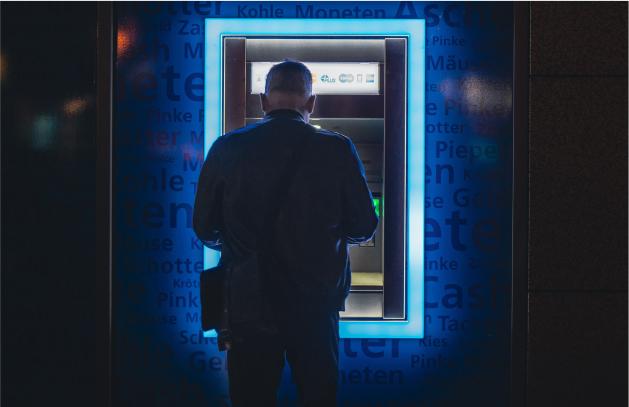June 14, 2022 · 6 Minutes
How to protect your savings in the inflationary environment?

“Inflation is taxation without legislation.”
Milton Friedman
Skyrocketing inflation is shocking the investors
For a few decades, the European Central Bank was firmly sticking to its 2% inflation target, and European investors benefited from a long period of low single-digit inflation. As the overall money supply was kept under strict control, maintaining the low inflation rate and the purchasing power of the Euro was not an issue.
The goal of the massive quantitative easing programs (read: printing new money) initiated a few years ago was to provide relief from the global COVID-19 pandemic. While the new money supply has been keeping governments and businesses afloat, it has resulted in skyrocketing inflation not seen in the last 30 years.
According to the data published at the beginning of April 2022, the Euro area’s annual increasing rate was expected to grow to 7,5%, up from 5,9% in February. In certain smaller countries, the annual inflation rate has hiked over 12%.
Skyrocketing inflation is putting all European investors in a complicated situation – no traditional asset class is currently capable of providing positive real returns. The situation is not eased by the fact that most of today’s investors have never experienced a high inflation situation before.
European fixed-income instruments (like government bonds) have been providing negative returns for years. Stock markets have been performing very well for the last few years, but in the light of the upcoming interest rate hikes and global uncertainty, we have already seen a quite significant correction, and in the short term, this asset class will probably not shine as it used to do. At the same time, alternative assets have been doing relatively well and will probably continue to do so in the future, but beating a double-digit inflation rate remains a challenge here as well.
How is inflation affecting your savings?
Senior investors, having experience with the high inflation rates in the 1970s and 1980s, can attest that inflation is the “portfolio killer” as it eats up the real value of the investments.
Even modest inflation will erode the purchasing power of the savings, and the effect of double-digit inflation is simply devastating. A low 3% inflation rate will reduce the purchasing power of 100 euros to 74 euros in 10 years. At a current 10% inflation, you would need about 260 euros in 10 years to buy something that is worth 100 euros today.
The worst thing about inflation is that you would need to take action to cause the loss of the purchasing power of your savings.
How to invest in an inflationary environment?
Any investment activity should aim to increase the real, inflation-adjusted value of the portfolio. Investing in an inflationary environment is no different. Your main goal should be finding the assets that outperform inflation, and if there are none, or the ones available are too risky, rebalance your savings and investments into the assets maximising the currently available returns (even if the real rate of return remains negative).
Here are some thoughts on investing in an inflationary environment.
Cash
As a first step, review your savings kept with the banks. Bank deposit rates are still close to zero, meaning the current inflation will eat up about 10% of your savings each year. As a rule of thumb, your liquid savings should cover your 6-month expenditures, so you could consider leaving them with banks. Any excess funds should be invested as soon as possible to mitigate the devastating effect of inflation.
Bonds
The current yields of fixed-income instruments are very low, proving no real protection against inflation. Even worse is the fixed-income instruments’ sensitivity to interest rates – as interest rates rise, the value of bonds shall decrease. Having invested in a 3%, the 30-year bond could result in a loss of about 40% of the investment should the interest rate for the newly issued bonds rise to 5%. If your investment strategy requires having a significant fixed income allocation (for instance, because of your age), consider switching to very short-term bonds or, alternatively, replacing a part of the fixed income allocation with secured real estate loans provided by real estate crowdfunding platforms like Crowdestate.
Stocks
Stocks, especially small- and medium-cap stocks, energy and materials, and financials, tend to do well in the inflationary environment as they will be able to increase their prices along with the inflation. At the same time, you should not forget about the upcoming interest rate hikes, which might shave off the stock market’s growth potential in the next coming years.
Real estate
Real estate has historically been doing great in the inflationary environment. Property values have historically been increasing in an inflationary environment as increasing prices for labour, material, and land make real estate developments economically less viable without a proportionate increase in rental levels or sales prices. This may result in the decrease of new property supply, which in turn allows the existing property owners to increase both prices as well as occupancy levels.
At the same time, long-term investments in cash-flow properties are open to the risks arising from the increase of interest rates – as debt financing becomes more expensive, the equity returns would probably suffer (at least in the short term).
Crowdfunded real estate investments
Crowdfunded real estate investments are usually short-term investments that have constantly provided investors with high single-digit or low double-digit return rates, even for well-secured secured loans. Consider switching a part of your savings to the mortgage-secured crowdfunded investments provided by real estate crowdfunding platforms like Crowdestate.
Gold and crypto
Some people like to switch to gold and crypto assets, seeing them as a hedge against inflation. However, you should keep in mind that neither gold or crypto are not producing any cash returns, their current value is completely driven by the speculative supply and demand.
Summary
Doing nothing and waiting until the central banks will manage to get inflation under control is probably the worst action plan today. Investing is likely to produce better returns than simply leaving savings sitting in cash. Every investor should take active steps to protect their hard-earned savings from inflation and rebalance their portfolio to assets that perform well in the inflationary environment.
PS. The good news is that most of the central bankers expect the inflation rate to decrease back to reasonable levels already in 2023.
Crowdestate is one of the very first real estate crowdfunding platforms, established in early 2014.
Start your real estate investment journey by signing up on Crowdestate to access a wide range of pre-vetted real estate investment projects.
Have questions about real estate crowdfunding? Here is our blog post about 7 things you should know about real estate crowdfunding.
——————————–
Investingintheweb.com is a website that helps people navigate the complex world of investment platforms with the help of unbiased reviews, comparisons, and articles. Check them out to find out the list of crowdfunding platforms available in your country.



